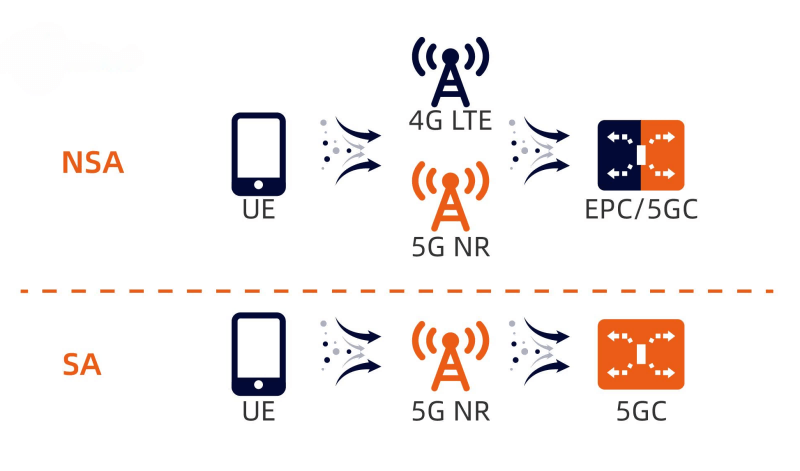According to the definition of 3GPP, 5G Standard is divided into two modes: Non Standalone Networking(NSA) and Standalone Networking (SA).
From the perspective of network architecture, NSA (Non Standalone) refers to the coexistence of 4G eNodeB and 5G NR on the wireless side with 4G core network(EPC) or 5G core network(5GC). SA (Standalone) refers to the 5G NR on the wireless side with 5G core network, which is the ultimate goal of 5G network evolution.

Why NSA architecture is needed
The birth of 5G standard protocol means that 4G network architecture should gradually develop into 5G network architecture, and SA architecture based on 5G NR + 5GC is the real goal of 5G development. But the reconstruction of the whole network architecture is bound to be time-consuming and expensive, so NSA network architecture came into being.
As a transitional network architecture, NSA can make full use of the existing network resources and gradually realize the smooth introduction of 5G and the smooth exit of 4G.
NSA networking architecture
In NSA networking, 4G eNodeB and 5G NR coexist, there is the concept of master station and slave station. Taking the OPTION3 series as an example, the signaling of the control surface is completed through the interaction between the 4G eNodeB and EPC. The 4G eNodeB is the master station and the 5G NR is the slave station. There are many paths in the data plane, so there are data diversion points. For example, the data diversion of Option3x is based on the packet level, and the data diversion point is 5G NR. User Plane data can be transferred to 4G eNodeB through 5G NR, and the rest will continue to be carried on 5G NR.
In the NSA networking evolution solution, Option 3 only needs to introduce a 5G wireless system and upgrade EPC to support 5G services, which is conducive to speeding up 5G deployment and achieving flexible network transition. Therefore, it is a networking solution adopted by many operators at the initial stage of 5G deployment.

